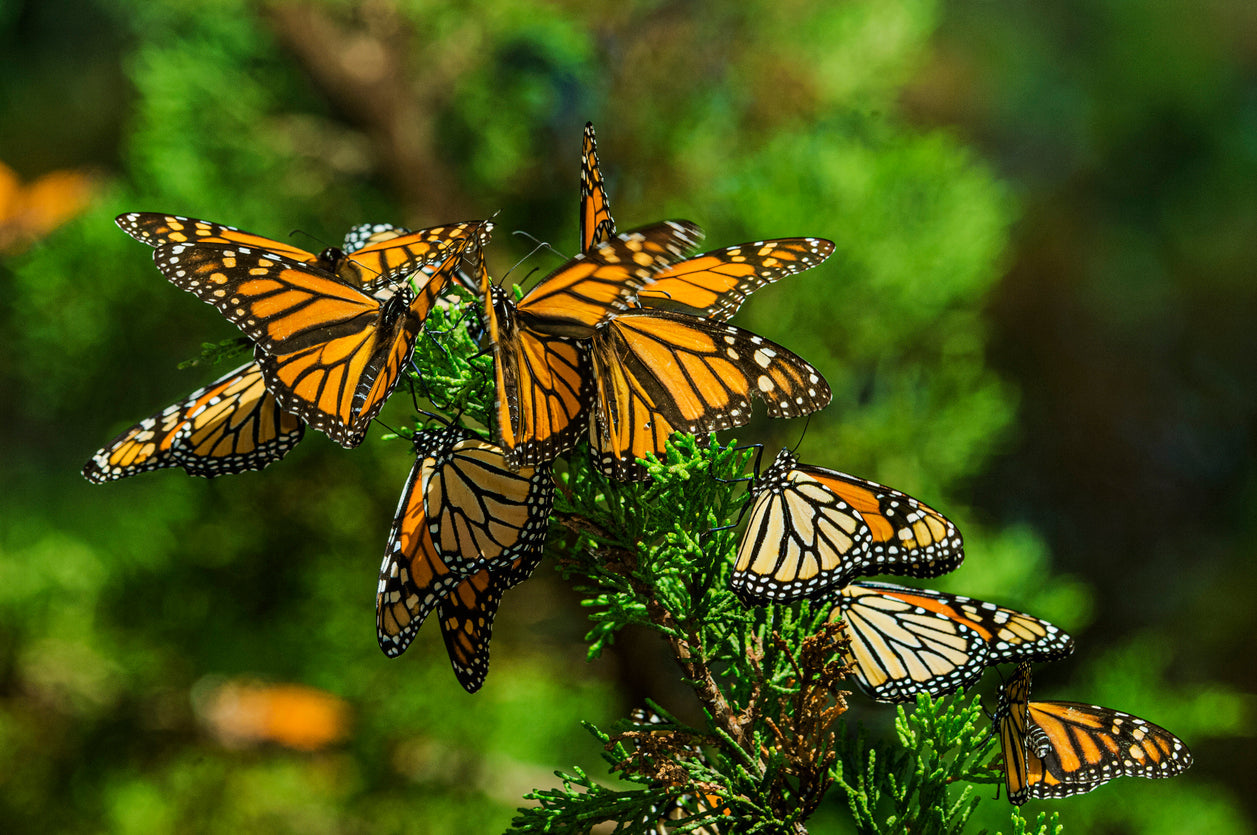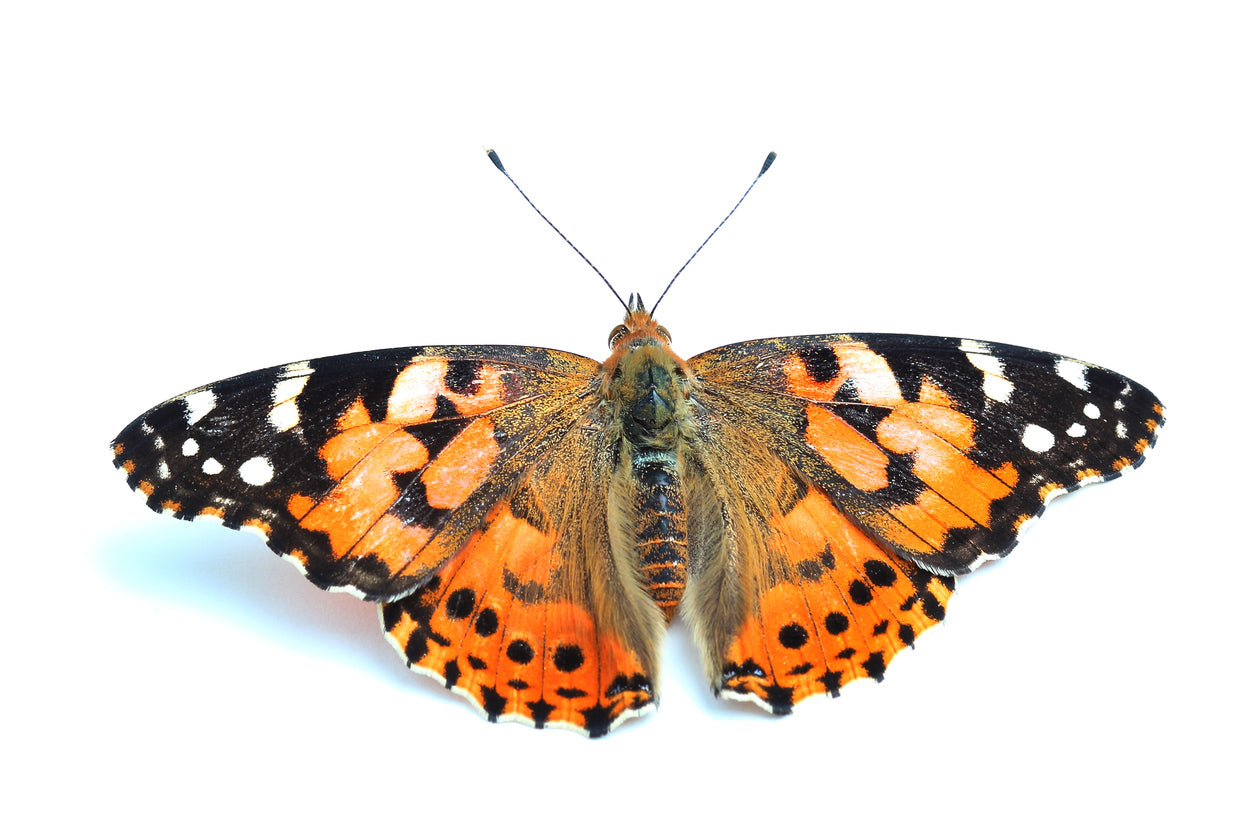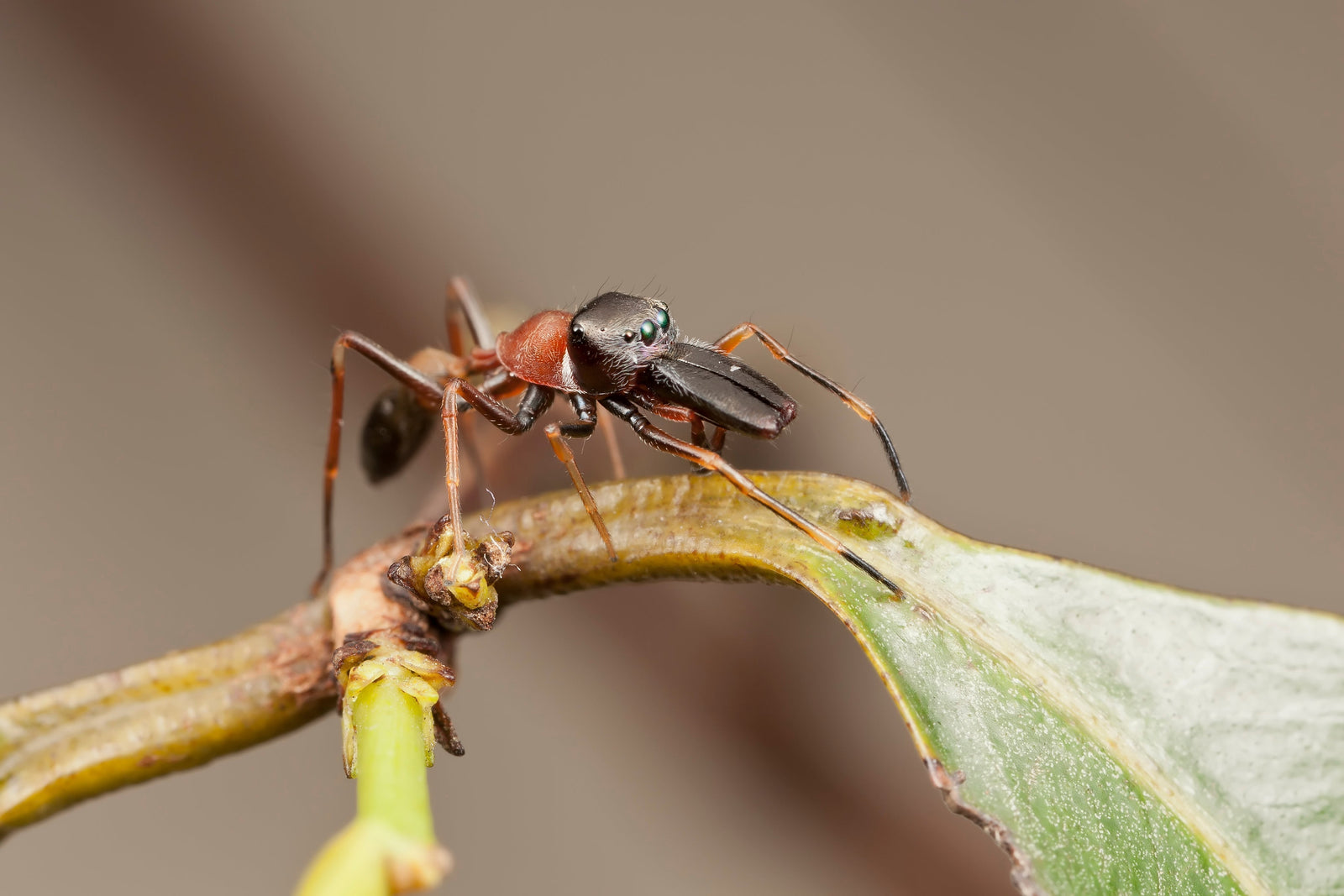Ectothermic (or cold-blooded) is a word which describes organisms that rely on external sources of heat to regulate their body temperature. Unlike warm-blooded animals that maintain a constant internal temperature through metabolic processes, butterflies must adjust their body heat by basking in sunlight or seeking shade to cool down. This dependence on environmental temperatures makes them highly sensitive to changes in climate and weather patterns. For instance, a drop in temperature can slow a butterfly's metabolism and reduce their activity levels, while excessive heat can lead to overheating and dehydration.
Add description, images, menus and links to your mega menu
A column with no settings can be used as a spacer
Link to your collections, sales and even external links
Add up to five columns
Add description, images, menus and links to your mega menu
A column with no settings can be used as a spacer
Link to your collections, sales and even external links
Add up to five columns

All About Butterflies: Climate and Temperature
By Spencer McManamna August 19, 2024 5 min read
Butterflies are more than just beautiful insects; they are also critical indicators of environmental health! As climate change accelerates, these enchanting flyers are revealing how shifts in temperature and weather patterns impact our ecosystems worldwide. From altering migration routes to affecting reproductive cycles, butterflies are deeply intertwined with climate dynamics. Understanding their responses to temperature changes not only sheds light on the broader impacts of global warming but also highlights the urgent need for conservation strategies.to protect these vital pollinators.
Are Butterflies Cold Blooded?
What Time of Day are Butterflies Most Active?
Butterflies are diurnal, which meant that their activity peaks during the warmer hours of the day, typically from late morning to early afternoon. This time frame aligns with their need for warmth as their ectothermic bodies require external sources of heat to maintain the best body temperature for flight and feeding. The sunlight improves their ability to find out nectar and mate, making these hours crucial for their daily activities.
Early mornings and late afternoons, when temperatures are cooler and light levels are lower, see reduced butterfly activity as they seek to conserve energy and avoid potential predators. The midday sun is the best time of day to go butterfly-watching!
Butterflies and Hot Weather
Hot temperatures have a big impact on butterfly metabolism, appetite, and overall life cycle, which shows how sensitive they are to environmental conditions. Butterflies generally thrive within a temperature range of 75 to 85 degrees Fahrenheit (24 to 29 degrees Celsius). When temperatures rise above this optimal range, their metabolic rate increases, causing them to expend more energy to maintain their normal body functions.
What Temperature is Too Hot for Butterflies?
At temperatures exceeding 90 degrees Fahrenheit (32 degrees Celsius), butterflies will have a tougher time feeding as they seek shade or cooler microhabitats to avoid overheating. Prolonged exposure to excessive heat can lead to dehydration and heat stress, negatively affecting their reproductive abilities and potentially shortening their lifespan. Elevated temperatures also accelerate developmental processes, leading to quicker but less robust life cycles, which can disrupt the timing of migrations and other vital seasonal behaviors. A butterfly raised in high temperatures have even been reported to have a shorter proboscis!
How Do Butterflies Thermoregulate?
Butterflies regulate their internal temperature through a mix of behavioral and physiological mechanisms, primarily because they are ectothermic. "Ectothermic" means that they rely on external (outside the body) sources of heat to maintain their body temperature. To warm up, butterflies engage in behaviors such as basking in the sun, where they spread their wings to maximize exposure to sunlight. They can also increase their internal temperature by vibrating their flight muscles rapidly during warming-up flights. To cool down, butterflies seek shaded or cooler areas and may rest with their wings folded to minimize heat absorption.
Hotter temperatures can significantly impact butterfly behaviors and overall physiology. Elevated temperatures may cause butterflies to become more active and have higher metabolic rates, leading to increased feeding and mating activities. However, extreme heat can also lead to dehydration and overheating, forcing butterflies to seek cooler microhabitats or even potentially leading to heat stress, which can reduce their lifespan.

How Climate Change Impacts Butterflies
Increasing temperatures create many significant challenges for butterflies, as they are highly sensitive to temperature changes. As ectothermic insects, butterflies depend on external heat sources to regulate their body temperature, making them vulnerable to heat stress and dehydration. Rising temperatures can disrupt their delicate balance, leading to increased metabolic rates and a higher demand for food and water. Additionally, extreme heat can alter their habitat by affecting the availability of nectar sources and suitable breeding sites.
These temperature changes can also impact their developmental stages, potentially reducing survival rates and affecting their migratory patterns. The combined threats of heat stress, habitat loss, and loss of resources threaten butterfly populations, and reveals our own need for effective conservation strategies in the face of incoming climate change.
Migration
Butterfly migration is profoundly impacted by climate change, altering both the timing and patterns of these remarkable journeys. Butterflies, being ectothermic, are sensitive to temperature changes, which can disrupt their migratory cycles. For many butterfly species, including the iconic Monarch butterfly, migration is a critical survival strategy that involves traveling long distances between breeding and wintering grounds. Climate change, however, introduces variability in temperature and weather patterns, which can affect the availability of essential resources such as nectar and suitable breeding sites along migration routes. Inconsistent weather conditions, including earlier or later springs and more frequent storms, can lead to mismatches between the timing of migration and the availability of resources, making it more difficult for butterflies to complete their journeys successfully.
The Monarch butterfly serves as a prime example of how climate change can affect migratory behavior. Monarchs undertake a remarkable migration from their breeding grounds in North America to their wintering sites in central Mexico, covering thousands of miles. Climate change has led to shifts in temperature and precipitation patterns that disrupt this migration. Warmer temperatures in the breeding grounds can lead to earlier emergence of larvae and changes in plant phenology, impacting the availability of milkweed, the primary food source for Monarch caterpillars. Additionally, unusual weather patterns and extreme temperatures during the migration can lead to higher mortality rates and disorientation, affecting their ability to reach the wintering grounds. These disruptions not only threaten the survival of individual butterflies but also impact the overall health and stability of Monarch populations.

Habitat Loss
Climate change has a profound impact on butterfly habitats, affecting both the availability and quality of environments critical for their survival. Butterflies are highly dependent on specific habitat conditions for their life cycle, including suitable temperatures, food plants, and shelter. Rising temperatures can alter the distribution and abundance of these habitats, leading to shifts in the geographic range of butterfly species.
For instance, changes in temperature and precipitation patterns can affect the growth and blooming periods of nectar plants and host plants, which are essential for adult butterflies and their larvae. Extreme weather events, such as droughts and heavy rainfall, can damage or degrade habitats, making them less hospitable for butterflies and often leading to declines in local populations.
The Monarch butterfly, a species known for its impressive migratory journey, is particularly vulnerable to habitat changes driven by climate change. Monarchs rely on a network of habitats across North America, including breeding grounds with abundant milkweed and wintering sites in Mexico.
Climate change impacts this network in several ways. Warmer winters in Mexico can lead to altered conditions in the forested areas where Monarchs overwinter, potentially affecting their survival rates. In the breeding grounds, changes in temperature and precipitation can influence the availability and health of milkweed plants, which are crucial for Monarch larvae survival!
Explore the Fascinating Lives of Painted Lady Butterflies with Insect Lore
Your adventure in the World of Butterflies is just getting started! Explore our Butterfly Kits!
Also in Butterflies

Enter Your Voucher Code Below
We are unable to combine redemption fees. If you are redeeming 1-5 voucher codes, please complete separate purchases through our website for each voucher. If you are redeeming 6+ vouchers, please email us at customerservice@insectlore.com with your voucher codes and shipping address and we'll send you a custom invoice for payment.
Our insects are sensitive to outdoor temperatures. We recommend ordering when
temperatures are between 50-90 degrees Fahrenheit.
If you are experiencing difficulty redeeming your voucher on your desktop, please use a mobile device for a better redeeming experience.
If you are experiencing difficulty redeeming your voucher on your desktop, please use a mobile device for a better redeeming experience.

We are unable to combine redemption fees. If you are redeeming 1-5 voucher codes, please complete separate purchases through our website for each voucher. If you are redeeming 6+ vouchers, please email us at customerservice@insectlore.com with your voucher codes and shipping address and we'll send you a custom invoice for payment.
$title
Thank you for Redeeming your voucher!
You redeemed a $title
Redemption Fee :$redemptionFee
$upsellList
$ctaLabel

Don't miss this special one Time Offer.
Check the Box to Add this Special Offer to your Cart
$upsellTitle
$upsellPrice

Don't miss this special one Time Offer.
Check the Box to Add this Special Offer to your Cart
$upsellTitle
SAVE $upsellSavePrice
It looks like you are an Insect Lore UK/EU customer! You are visiting the Insect Lore USA website.
Click Insect Lore UK/EU website to be redirected to insectlore.co.uk.





